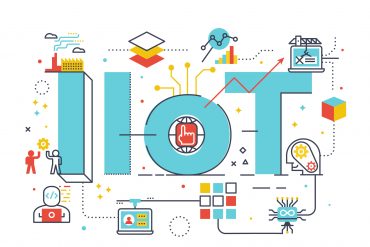
Making quick and efficient decisions as restrictions lift requires an accurate and real-time picture of company data to continuously monitor for changing conditions.
As the world continues to navigate the implications of COVID-19 and get back to work discussions, the time is now for the C-suite to reconsider the role data is serving in their evolving strategies. There’s been an abundance of abstract discussions for many years around the power of analytics to make an impact. However, many leadership teams have discovered that a crisis is not the time to uncover a gap in data availability or a deficient governance process around personally identifiable information (PII) data and other sensitive information.
See also: Businesses Increase Automation Investments Due to COVID Pandemic
There have always been go-to business analysts who crunch numbers for organizations, but organizations need the C-suite ready to act on relevant and timely data. After all, companies may have all the data in the world but can quickly become paralyzed or ineffectual without the ability to understand it and act quickly.
C-suite executives must become more familiar with modern analytical concepts. For example, executives need to move from relying on descriptive analytics, which is information after the fact, to predictive analytics that outlines various scenarios and conditions to make predictions about the future. As a starting point, I’ve outlined several questions executives should be asking themselves, not only in the immediate term but in a post-COVID world as well.
Where Are My Employees and are They Safe?
As companies begin to envision a new normal, there are important office and real estate decisions that you are assuredly considering regarding appropriate remote work procedures so employees can return to the office safely. To do this quickly and efficiently as restrictions lift –and to enable continuous monitoring for changing conditions – an accurate and real-time picture of company data will be crucial.
A recent survey by Gartner found that 41 percent of employees are more likely to work at least some of the time post-pandemic remotely. As offices re-open, you must determine and monitor employee needs for all three possible scenarios – full-time return, full time remote, and a split/shift mix. For example, analytics will be crucial in accurately determining if there are enough desks for all employees who wish to return to the office, what resources remote workers need based on role, or if relocation/downsizing of offices will fit the short and long term staff cultural needs.
Where are My Customers and How Affected are They by the Pandemic?
With the COVID-19 crisis evolving daily, it’s important for the C-suite to carefully evaluate all aspects, but especially regarding customers. Given social distancing and the reduction of operations, decision-makers need to have real-time customer data available on-call. This will not only help organizations understand their customers’ needs and ensure consistent service/product delivery and performance but also help predict unexpected steps you need to take to ensure satisfaction based on changing conditions.
For instance, having up-to-date Net Promoter Scores (NPS) data on hand is becoming increasingly important amid the pandemic. This data helps an organization understand what customers think about their respective products and services right now. Knowing the NPS affords the opportunity to fix failing strategies and tailor offerings quickly with an eye towards both current satisfaction and retention, crucial for financial stability in the crisis.
With different phases of re-opening, it is also important to have real-time data on where each customer is within the process and what that looks like based on each region’s re-opening guidelines. This involves the tracking of new office hours, service expectations, and delivery modifications, among other safety measures for both your team and the customer staff.
Ultimately, this maps to the importance of having established data-driven business continuity plans that guarantee the continuation of important operational structures such as customer service and communications in the wake of COVID-19.
How Will This Affect Demand for My Products and Services?
Purchasing behaviors are shifting daily, many times based on the industry sector. For example, travel and local retail are two of the hardest impacted sectors. That has created a waterfall effect on car manufacturers. In turn, this has a downstream effect on OEM parts manufacturers. Are any, or all of these, your customers? And as conditions change, and we re-open some areas of the economy, will you be able to meet pent-up demand? What if you service the commercial real estate sector? Have you modeled what a mass move to remote working would do to demand from that client base six months from now, and can you pivot? If retail is a prime market for you, are you actively tracking data to see how local/regional brick and mortar stores are streamlining pricing and delivery options in the face of Amazon’s growing dominance, and can you help serve them better? You must tap into the wealth of both internal and external data to react and plan for shifts in products and service demand to turn a profit during these economic uncertainties.
Data Can Help Guide to a More Stable Future
All these instances demonstrate the need for the ability to collect, work with, analyze, and argue with data. That’s what we call data literacy. Data literacy’s importance is clearer than ever, and creating an opportunity through both technology and training to quickly increase your organization’s data literacy will help drive efficiencies and uncover new opportunities that can fuel recovery.
With all crises come silver linings. The C-suite is tasked with making tough decisions amid these uncertain times, and with better access to and understanding of data, you can have the necessary tools to make better decisions at scale and speed. There will be a light at the end of the tunnel – effective use of data can help illuminate the path forward.





























